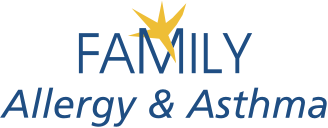A Regional Guide to Seasonal Allergies in the United States

From the lakes of Minnesota to the hills of Tennessee, no part of the U.S. is free of allergens. However, with a proper understanding of the common local triggers, you can be proactive in minimizing exposure and mitigating the effects of seasonal allergies. This guide will help you enjoy the seasons to their full potential, from sea to shining sea.
What are Seasonal Allergies?
Seasonal allergies, also known as hay fever or allergic rhinitis, are the immune system’s response to airborne substances, such as pollen or mold spores, that appear during certain times of the year.
These common allergies affect an estimated one in three adults and one in four children in the U.S. each year. You may be living with seasonal allergies if you experience these common symptoms:
- Sneezing
- Runny or stuffy nose
- Itchy, watery or red eyes
- Itchy nose, ears or throat
- Frequent headaches
- Fatigue, which can be due to poor sleep quality from symptoms.
- Wheezing or shortness of breath
The severity of these symptoms can vary from person to person and can significantly impact an individual’s quality of life, particularly during peak allergy seasons.
A Regional Guide to Seasonal Allergies in the U.S.
Whether you’re in the damp climates of the Northwest or the warm South, understanding what allergens to expect of your environment can make all the difference in how you handle allergy season.
Northeast
In the Northeast, tree pollen kicks off the allergy season as early as February, with species like birch, cedar and maple leading the charge. Grass pollens take over by late spring and early summer, followed by weed pollens, particularly ragweed, in late summer and fall.
Southeast
The Southeast’s mild winters and extended warm periods create a longer allergy season. Tree pollen appears first, with oak, elm and pine being the most prevalent. Grass pollen and mold are also significant contributors, with ragweed pollen dominating the fall allergy season.
Midwest
The Midwest sees tree pollens such as oak, birch and cedar in the spring, followed by grass pollens around May and June. Ragweed pollen becomes an issue in late summer, with mold spore levels fluctuating depending on the humidity.
Southwest
Due to its dry climate, the Southwest has unique allergens like juniper, cedar and oak tree pollens circulating as early as December. Grasses and weeds, including sagebrush and Russian thistle, can cause problems year-round, especially in landscaped urban areas.
Northwest
The Pacific Northwest’s damp climate creates an extended tree pollen season, with alder, birch and cedar leading the charge from February to April. Grass pollen and mold spores take over from May to July, with weed pollens appearing in the fall – August to September.
Managing Seasonal Allergies
To manage seasonal allergies effectively, it’s crucial to stay informed about local pollen counts. You can limit your exposure by keeping windows and doors closed. Once home for the day, shower and change clothes to remove any allergen that may cling to fabrics and avoid contaminating areas like furniture or pillows. Consider medication or consulting an allergist for personalized treatment options, such as allergy shots.
Identify your symptoms and discover allergy relief!
Let’s find a clear solution together! Family Allergy & Asthma’s trusted allergy specialists are always ready to guide patients toward relief. With locations across the region, allergy relief is always close to home. Contact us today to schedule your allergy appointment.
About Family Allergy & Asthma
Founded in 1979, Family Allergy & Asthma’s practice network of allergy and asthma specialists provides high-quality, reliable and lasting allergy relief throughout Arkansas, Florida, Illinois, Indiana, Kentucky, Missouri, Ohio, Pennsylvania and Tennessee, and includes affiliates Allergy & Asthma Specialists (AAS), Asthma and Allergy Associates of Florida (AAAF) and Arkansas Allergy and Asthma Clinic (AAAC). For more information, visit familyallergy.com, and follow Family Allergy & Asthma on Facebook, Instagram and X.
